Celebrating Jane Mulfinger: International Artist + UCSB Professor of Art and CCS Art Faculty Emerita
An American conceptual artist and educator provides insights and reflections
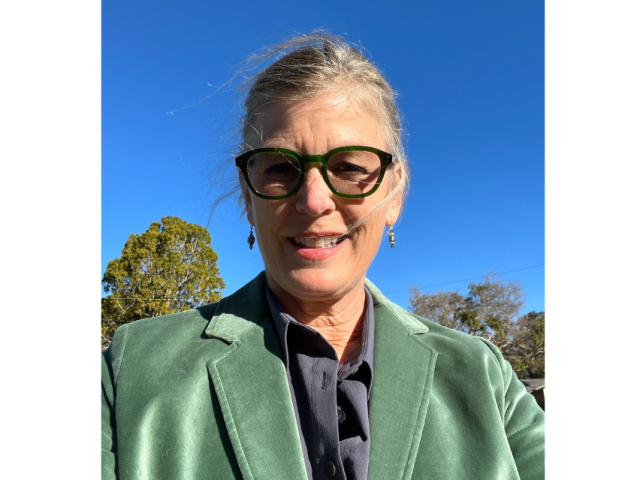
University of California, Santa Barbara (UCSB) Professor Jane Mulfinger is an American conceptual artist and educator. Arriving at UCSB in 1994, Jane recently retired after several decades of dedication to teaching and mentoring undergraduate and graduate students in the Department of Art and the art program at the College of Creative Studies (CCS). CCS recently sat down with Jane who reflected on her artistic practice alongside her commitment to teaching, mentoring, and service to the UCSB community.
Jane’s rich career as an international artist–including installations, time-based works, and sculpture–span more than 35 years. Her artwork is interdisciplinary, evidenced by the cultural anthropologists, sociologists, ethnologists, peers, scholars, and critics it has garnered over the years.
Jane is not done creating…far from it.
“Over three decades at UCSB, Jane has shown an admirable dedication to students at all levels of their academic journeys in the College of Letters & Science department of art and the College of Creative Studies art program. She is always an enthusiastic driver of art, and an invaluable liaison between the art department and CCS, always prioritizing student academic excellence and their professional development as aspiring artists. Jane was as creative in curriculum experimentation as she was with her own artistic endeavors, including her highly sought Civics in the Time of a Pandemic course in Spring 2020 after in-person classes were cancelled during COVID-19. This artist extraordinaire whose countless exhibitions and curatorial projects cross cultural and timeless boundaries is anything but ordinary.”
—Timothy Sherwood, Dean, College of Creative Studies
Early Work
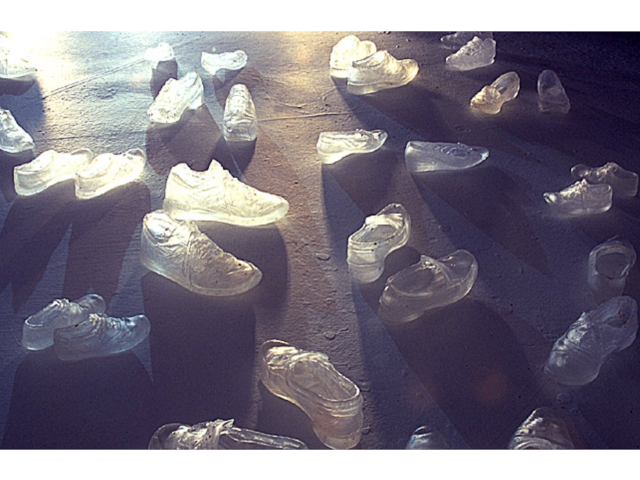
As a Studio Art undergraduate student at Stanford University, Jane traveled to Florence, Italy which she says “[that experience] totally changed my early art from painting to sculpture.” After graduating in 1983 from Stanford, she moved to West Berlin, Germany where she studied with expatriate sculptor Shinkichi Tajiri at Hochschule der Künste and had her first solo show at the Endart Gallery in 1987.
Upon completing her graduate work in Sculpture at the Royal College of Art in 1989, Jane remained in London and her early work is recognized as addressing the relationship between architecture, memory, and the human body. This artist’s representations disrupt and challenge our sense of site and our understanding of history. Jane posits the sociological, political, and formal/spatial contexts of architecture and history with the objects and text that she incorporates. Her 1994 installation “Caught in Passing” of 22 pairs of cast Schott crystal shoes from NY’s Salvation Army discards is representative of her early work.
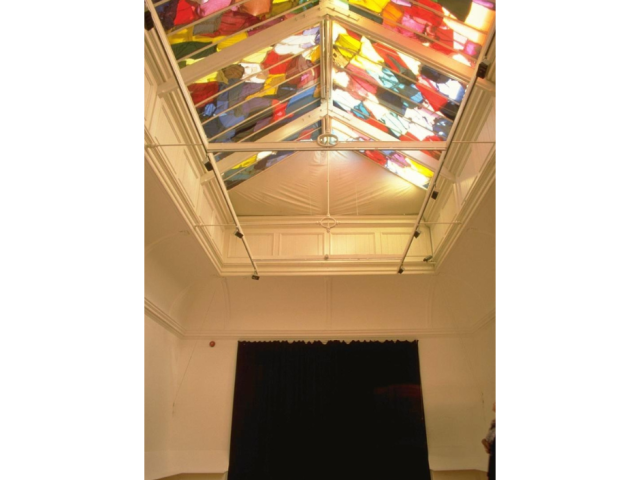
In other 1989 installations—-such as Norris, R.E.and Rhoberts I—-Jane transformed exhibition spaces into areas of contemplation by sewing locally collected, discarded clothing into tarpaulins that she fitted over skylights, creating multi-colored panels resembling cathedral stained glass. Beneath them, she altered the environments by painting walls, covering windows in fabric, and adding a series of benches or chairs. At times, Jane projected images of seated individuals from different historical periods directly onto the benches. Critics suggested that these works connected viewers to a cycle of life and death or presence and absence.
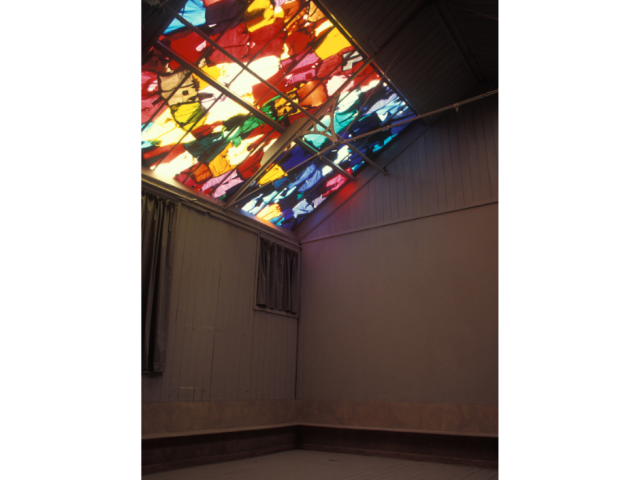
Early on in her career, this artist gained institutional and critical recognition for shows at several galleries, including the Southampton Museum of Art and Flaxman Gallery (London).
British art critic Sarah Kent wrote an article in 1996 that named Jane as one of the women artists who should be considered for the shortlist for that year’s coveted Turner Prize, the UK equivalent in art to the MacArthur “Genius” Award in the US or the Pulitzer Prize in literature.
The Journey to Santa Barbara
Compelled to teach, Jane arrived in Santa Barbara in 1994 and accepted a Lecturer teaching appointment in the UCSB Department of Art and the College of Creative Studies. After 10 years of teaching, mentoring, and creating art, Jane was appointed Assistant Professor in 2004 and after a meaningful work life at UCSB, retired in 2023 at Professor VIII.
“One of the most memorable and singular aspects of teaching at CCS has been the variety of courses I was able to teach, pivoting when needed in response to student interests and the intense engagement that students at this College expressed. So many individuals made a mark on my life by responding, challenging, and enlightening me.”
—Jane Mulfinger, UCSB Professor of Art and CCS Art Faculty Emerita
Over the years, Jane taught numerous courses focusing on spatial and sculptural topics, including the Mobile Works course that placed thought-provoking temporary student artwork of any medium on campus. Among other courses Jane taught, they include: Proportional Analyses, Installation and Arte Povera, Articulating Concepts in Art Making, and Material Strategies.
During the COVID-19 pandemic, Jane used her curriculum ingenuity to create and revamp courses. She encouraged students to reflect on and respond to ever-changing world social conditions whether they were emotional, physical, or environmental; themes that continue to be central to Jane’s own artistic practice. Jane created and offered Civics in the Time of a Pandemic online in Spring 2020 after in-person classes were cancelled and the university switched to remote learning. Designed to “...encourage students to support their communities and provide them a platform to collaborate, pool their ideas, and use their expertise to identify possible actions they could take to help others in a time of adversity,” echoing art actions and performances of the 1960s and 70s. The course filled up quickly as there was a tremendous response from students.
“Jane was (and remains!) a valuable sounding board, creative problem solver, and incredibly talented colleague. Whether during a quick walk around the lagoon, a leisurely coffee chat, or in a formal meeting setting, her ability to really listen and truly see another person is obvious. Jane's dedication to students and their professional arcs is admirable, and in bridging the larger UCSB and art community with CCS, Jane helped forge a strong base for many students yet to come.”
—Kathy Foltz, UCSB Professor Emerita of Molecular, Cellular, and Developmental Biology (MCDB) and CCS Biology; CCS Interim Dean (2016-2018)
Another example is Jane's Field Research course which normally involved field trips to Los Angeles and San Francisco which she revamped to be taught remotely. Over Zoom sessions, she invited artists, curators, and others to interact with the students to gain a deeper understanding of their work, given the realities of the pandemic. Again in this course, Jane encouraged the students to think beyond the confines of a classroom and an academic setting.
“Not only was Jane Mulfinger an excellent artist, but she was also an amazing teacher as her students know. She was a wonderful colleague, generous with her time and always going the extra mile. It was an honor to work with her in the art department. On a personal note, after I had neck surgery she had a delicious meal delivered to me and my husband Phil as a get well soon gift. We were very touched, and Phil was delighted to get an evening off from cooking! I miss her presence on campus already, but hope to see her socially more now she is retired.”
—Jane Callister, UCSB Professor, Painting and Drawing
Jane’s dedication to teaching and mentoring is revered by her students, undergraduates and graduates alike. She is an inspiration to generations of students whose career paths have led them to become artists, curators, exhibitors, educators, and leaders in their communities and respective fields. A key component of Jane’s academic success is that she always treated her students like fellow professionals rather than students along with her positive hands-on approach and willingness to allow students to experiment even at the risk of failure, part of experiential learning. From student class evaluations:
“She is the best professor I've met at UCSB. Professor Jane is very very respectful to students, helpful, and nice. Her course is inspirational, organized. She is always ready to help you if you want to try new material. Take her class!!
“I love that you always see her working on her own stuff in the sculpture yard too. Overall great art prof whether in lecture or in studio.”
“She pushed us to explore outside our creative comfort zones.”
“THE BEST art professor in the entire university. She is a very well known artist in Europe as well as in the U.S…extremely smart, intellectual, and passionate. Highly organized, honest, and fair. What else do you need from an art prof.?”
“The projects were GREAT!”
It is quite remarkable that Jane was able to sustain her incredibly productive academic role while simultaneously building her creative practice, even expanding it internationally.
In addition to teaching at UCSB, Jane developed two new artist residency programs, assisted in the implementation of the art building remodel, co-curated the first major UCSB alumni exhibition, and was the coordinator of the CCS Art program for several years, among other roles and responsibilities on campus. Jane is revered by her academic colleagues, including as Chair of the Department of Art (2011-2014), considered to have been a time of significant creative expansion, focusing on student recruitment and curriculum development.
As an international educator and artist, Jane also taught at the University of North Carolina (1997), Southampton Art Museum (UK, 1993) and Chelsea College of Art and Design (London, 1992); and was a artist-in-residence at Beaconsfield (London, 2016), American Academy in Rome (2016), the Djerassi Artists Residency (2002), the National Glass Centre, (UK, 2001), and the New York Experimental Glass Workshop (1993).
In her ‘spare time,’ Jane maintained a strong profile of public, community-based research and service with K-12 students in the greater Santa Barbara area.
“Jane was a constant force for good in our department. No matter how crazy things (or people) got, she was always a steadfast keel of thoughtfulness, patience, and grace. Her stellar work as an artist reflected this same mindset, and unsurprisingly she was a beloved teacher as well. Jane led by example and was the best Department [of Art] Chair I've ever worked with. I miss her honesty, presence, and perspective.”
—Kip Fulbeck, UCSB Distinguished Professor of Art
Artwork that Collects and Transforms Human Artifacts
While teaching at UCSB, this artist’s work continued to flourish. Jane continued to have a successful career that is characterized by the impact and relevance of her work over time, building from her early creative projects. Jane’s work continued to collect and transform human artifacts—ranging from found clothing or photographs to language (personal accounts, jokes, literature) to abandoned architectural spaces—to reflect on experience, perception, memory, and concealed histories illustrated throughout her installation, sculpture, spatial arts, and site-specific art projects.
Writing in a past issue of Art and Design, artist and writer John Stathatos describes Jane’s work as a response to "...the complex, fragmentary character of the contemporary city and the way this affects its inhabitants." This approach can be seen in much of Jane’s work since 1989:
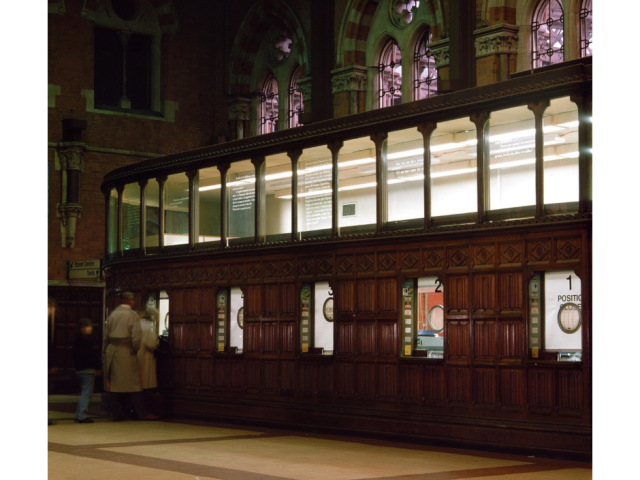
'Common Knowledge’ etched glass panels installed in St. Pancras Station in London with collected European jokes about other Europeans in their original languages;
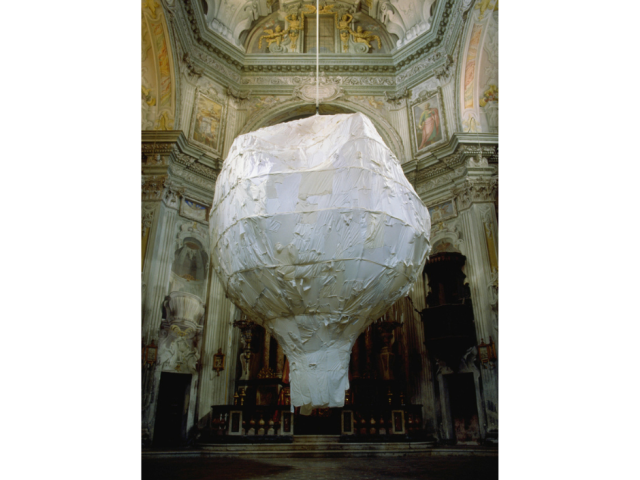
'I Battuti Bianchi’ in Carignano, Italy fuses the history of the architectural site with the human desire for ascendance;
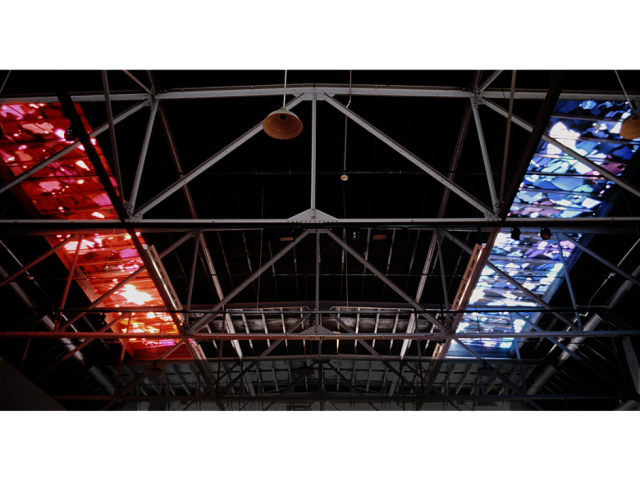
'Armory as Cathedral, Beyond the Visible Spectrum,’ in Pasadena transforms locally discarded red and blue clothing into pseudo stained glass;
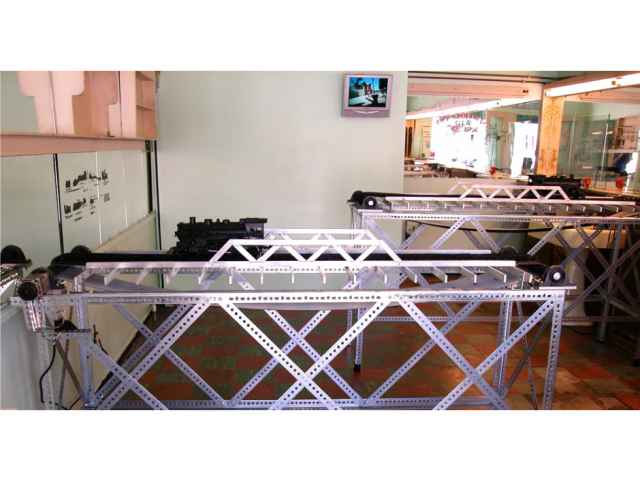
'The Fictive City and Its Real Estate: The Tale of the Transcontinental Railroad' illuminates a specific history of urban decline and renewal in the Los Angeles Chinatown(s) using the background of railroad construction in the West. For this work, Norman Klein collaborated with his essay, "The Three Chinatowns."
![Jane Mulfinger Installation: Regrets Gallery Installations 1995 - 1997 [above: Franklin Furnace, N.Y.] Etched car rear-view mirrors, aluminum rod, slide projection](/sites/default/files/styles/medium/public/2025-05/3.png?itok=6WUwbKT8)
The longstanding 'Regrets' series (Cambridge, Paris, Linz, Santa Barbara with Graham Budgett) is a growing archive of anonymous regrets, their collection staged in city-centres with computers on backpacks. The series takes on the nature of human regret, proposing that the concise admissions and reflections are positive indicators of the potential for learning and renewal.
Jane has exhibited widely internationally in the United Kingdom, the United States, Israel, and throughout Europe, including solo shows at Franklin Furnace Archive (New York), Centre for Contemporary Arts (Glasgow), Galerie Guido Carbone (Turin), Mayor Gallery (London), Underwood St. Gallery (London), Santa Barbara Contemporary Arts Forum (Santa Barbara), and the Otis College of Art and Design (Los Angeles). In addition, her work has been featured at the Contemporary Art Society (London) and Beaconsfield Gallery (London), Palazzo Bricherasio (Turin), Armory Center for the Arts (Pasadena), Camden Art Centre (London), Santa Barbara Museum of Art (Santa Barbara), Franklin Furnace Archive ( New York), and Orchard Gallery (Derry).
Finding time between teaching, creating works, and exhibiting, Jane also curated exhibitions at UCSB, including at the Art Design and Architecture Museum and the College of Creative Studies. Staged in the CCS Art Gallery, one of her exhibition showcased work by UCSB faculty and former graduate students—Department of Art Continuing Lecturer Eric Beltz ‘04 (L&S MFA, Art Studio), Elizabeth Folk ‘09 (L&S MFA, Art Studio) and Stephanie Washburn ‘10 (L&S MFA, Art Studio), among others. By contrast, the exhibition Take to the Stairs featured undergraduate student work and necessitated climbing staircases to view the exhibits. The show escaped the limits of a contained gallery in the arts complex and was featured across campus, appearing in the Humanities and Social Science building, the Bren School of Environmental Science & Management, the Department of Physics building, and a parking structure stairwell. This commitment to expanding access to student work beyond the disciplinary confines of the Department of Art and CCS to encompass the wider community represents Jane’s dedication to making art accessible to all.
Jane’s work continues to be reviewed and featured in an array of publications, including in the Los Angeles Times, The Guardian, The Times (London), Flash Art, Art and Design, Contemporary Visual Art, Art Monthly, Untitled, Tema Celeste, The Economist, La Stampa, and regular coverage in London’s Time-Out Magazine under the direction of Sarah Kent. Her radio interviews include BBC Cambridge, Radio 1 Austria, Vimeo, and Daily Motion. In 1994, a monograph of her work was published.
The Journey Ahead
This artist continues to create and showcase her creations. Jane’s respected practice spans more than three decades, and perhaps we will see more of her spatial, large scale, and site-specific installations. She will happily delve into extensive research to properly align them with physically unique and complex settings.
There is no doubt Jane will continue to be engaged in non-traditional public-facing venues and culturally relevant art projects accessible to all, curating, lecturing, and mentoring using her abundant imagination and boundless creativity.
Jane’s work will continue to have remarkable historical longevity.
Jane is far from done.
Keep up with Jane Mulfinger.
View Jane’s work from1986 to 2016.
Source of Images: Jane Mulfinger